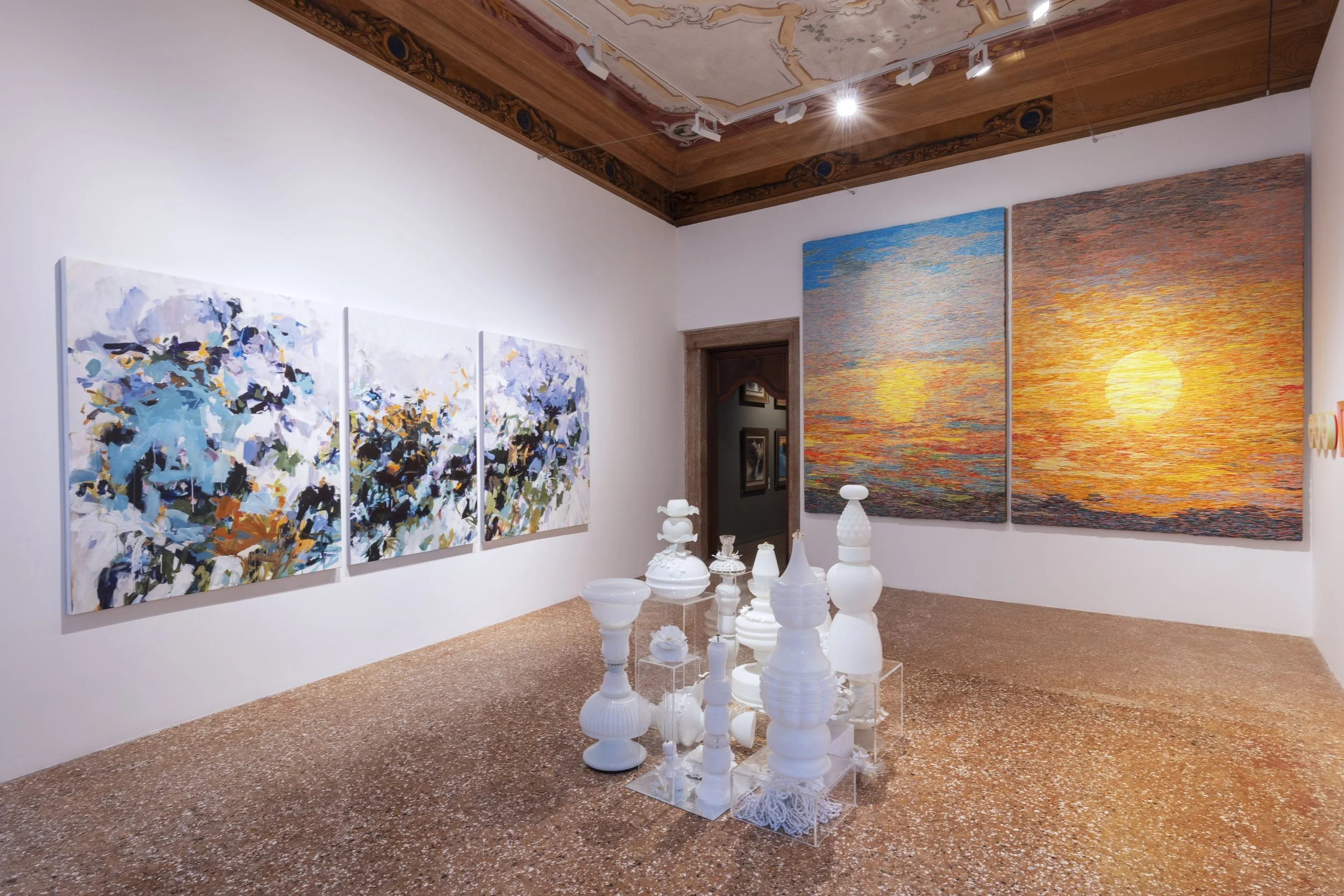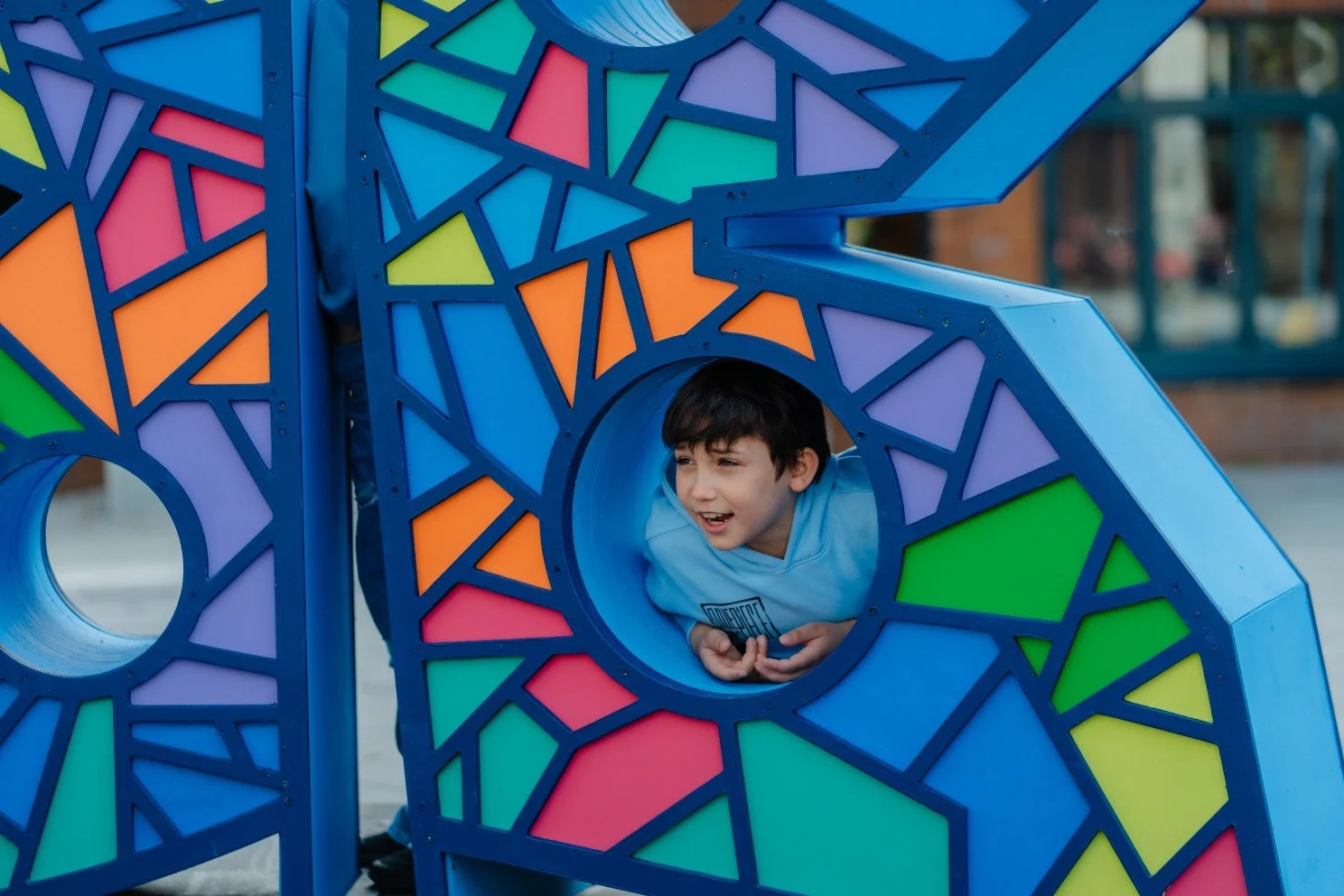10 Questions with Suly Bornstein-Wolff
The immigrant experience of being uprooted from one country (Brazil) to another (Israel) informs Suly Bornstein Wolff's creative work. She studied design and jewelry making at Seminar Kibbutzim College and Interior design at Ort College.
While attempting to accommodate herself to a new place, a new language, and a new culture, she found herself attracted to a certain species of trees that seemed alien to the local landscape. She was intrigued by the tropical palm trees and eucalyptus, species that had been imported from other places. The palm trees were originally intended to decorate and enrich the gardens of Tel Aviv, nestled between the Bauhaus buildings.
As a multidisciplinary artist, she paints and sculpts, creating objects which she merges into installations. She usually uses 'readymade' and recyclable material. Her diverse artworks are dealing also with concepts of beauty, patterns, aesthetics, and crafts. In her paintings as well as in her objects and installations there is deep attention to those characteristics that enhance feminine creation and strength. Suly's works manifest reductive formal structures and colors, as well as a conceptual statement on contemporary urban cultural metaphors.
Suly Bornstein Wolff's works and installations were exhibited in solo and group exhibitions in Israel, Italy, USA, and India. Suly Bornstein Wolff works and lives in Tel Aviv.
Suly Bornstein-Wolff - Portrait
Vessels | Project Description
The glass objects represent a testament to the resilience of the human spirit, says Suly Bornstein Wolff.
The work entitled Vessels began as a tribute to the artist's mother who, as a little girl, lived the devastating Kristallnacht event before WWII started in Germany.
The installation created by the artist consists of white glass objects with smooth reflective surfaces that symbolize beauty, symmetry, and perfection. However, beneath this veneer, a few of the objects contain layers of glass shards. During the work with glass objects, some may slip from the hand and shatter; the artist continuously collected the sharp fragments and preserved them as a means of keeping alive the memory of Kristallnacht. The artist went on to incorporate the sharp fragments as well as numerous birds-like miniatures shaped in white paper cutouts, crystal beads, ceramic parts, and other materials mounted on thin metal wires that swirl around the elongated glass white totems, imbuing them with powerful symbolism.
Segments of ready-made glass and crystal lampshades, bohemian vases, and contemporary and vintage vessels that Bornstein Wolff connects become "ghostly" objects of imaginary buildings reminiscent of ancient palaces, temples, or futuristic architectures.
The elements are intertwined and represent simultaneously decomposition and destruction – and the juxtaposition of both is a yearning to rebuild and start anew, as well as a poignant cry from the depths of despair.
White color has been a powerful symbol throughout history. In some cultures, white is associated with spiritual enlightenment, while in others, it is associated with purity and innocence. In both Eastern and Western cultures, white has long been used in art, literature, and religious ceremonies to express deep spiritual messages. Additionally, white has also been used to signify hope, new beginnings, and the promise of brighter days.
Vessels inspires us to see the beauty in imperfection and the hope that emerges from pain and loss and serves as an evocative reminder that life is a complex mixture of different emotions, truths, pains, joys, impurities, purities, aesthetics, and various ends that may or may not meet.
Personal Structures (2024), Exhibition view, Palazzo Mora © Suly Bornstein-Wolff | Photo Federico Vespignani - European Cultural Centre
INTERVIEW
Welcome back to Al-Tiba9, and congratulations on showcasing your work at Palazzo Mora during the Venice Biennale 2024. How does it feel to have your work exhibited at such a prestigious event?
Thank you for welcoming me once again to your beautiful and intriguing magazine. This year's event in Venice held special significance for me as it resonated deeply with my personal history and memories. Taking the time to enjoy the exhibition at Palazzo Mora and meeting artists and visitors from around the world was a truly enriching experience.
Exhibiting in Venice, a city renowned for art and history must be quite an experience. How has the city and its unique atmosphere influenced your creative process?
Venice has always held a special place in my heart, and this is my third exhibition in the city. Its soft light, architectural beauty, and artistic richness create a unique environment that profoundly inspires my work. Working with glass and exhibiting glass art in Venice, where the Murano glassworks are breathtaking on any scale, has been a central reference and inspiration for me. I am so happy and grateful to see the reactions of Venetian visitors, art collectors, and local curators to my work; it is truly meaningful and never taken for granted.
Sully B. Wolff - Personal Structures (2024), Exhibition view, Palazzo Mora © Suly Bornstein-Wolff | Photo Federico Vespignani - European Cultural Centre
You are showcasing your installation Vessels in Palazzo Mora. Can you tell us more about this project and how it came to be? Where did you get your inspiration from, and how did you turn it into the final work?
I see glass objects as a testament to the resilience of the human spirit. The work "Vessels" began as a tribute to my mother, who endured the devastating Kristallnacht event as a young girl in Germany before World War II. Created specifically for Palazzo Mora, the installation features white glass objects with smooth, reflective surfaces that symbolize beauty and symmetry. However, beneath this veneer, some objects contain layers of preserved glass shards, reminiscent of the shards collected from accidental slips during their creation.
The color white holds profound symbolism across cultures, representing spiritual enlightenment, purity, and hope. "Vessels" invite viewers to perceive beauty in imperfection and to discover hope amidst pain and loss.
In the installation, you use both glasses, your primary medium, and several other different materials, such as paper cutouts, crystal beads, and ceramic parts. How do these elements contribute to the overall narrative of your work? And what challenges did you face in integrating them into your installation?
In this installation curated by Vera Pilpoul, we chose to incorporate miniature forms shaped like birds made from white paper cutouts, crystal beads, ceramic parts, and other materials. These elements are mounted on thin metal wires that swirl around the elongated glass totems. They symbolize themes of decomposition and destruction, juxtaposed with a profound yearning for renewal and rebuilding.
Integrating these diverse materials presented challenges but also enriched the narrative depth of "Vessels." The inclusion of ready-made glass objects, crystal lampshades, bohemian vases, and contemporary vessels creates a haunting ambiance that evokes both ancient and futuristic architectural elements.
Vessels © Suly Bornstein-Wolff | Photo Avi Amsalem
Vessels © Suly Bornstein-Wolff | Photo Avi Amsalem
Vessels © Suly Bornstein-Wolff | Photo Avi Amsalem
Vessels © Suly Bornstein-Wolff | Photo Avi Amsalem
Your installation at Palazzo Mora is described as "ghostly" and reminiscent of ancient palaces or futuristic architecture. What message or feeling do you hope to convey through this work?
"Vessels" embodies multiple layers of meaning drawn from diverse cultures and societies I have experienced. For instance, my visits to India left a profound impression, particularly the extraordinary temples, while in New York, the super-modern and futuristic skyscrapers became part of my visual vocabulary. These architectural structures have influenced my work significantly.
The installation comprises various components, including perfectly shaped totems aspiring towards the sky and the use of white, a color symbolizing purity, peace, and new beginnings. These elements and shapes also draw inspiration from Italo Calvino's novel "Invisible Cities," which explores the interplay between memory, place, and desire, examining how travel—real or imagined—and the passage of time transform these relationships.
This fusion of architectural influences, cultural symbolism, and literary references enriches the narrative and thematic depth of "Vessels," creating a work that invites contemplation on identity, memory, and the human experience.
Vessels were previously exhibited for the Arte Laguna Prize. Are there any differences between the two versions of the work? And how did you adapt the installation to two extremely different exhibition spaces, such as the Arsenale and Palazzo Mora?
For the Palazzo Mora exhibition, I introduced broken glass into some of the new vessels, symbolizing devastation, war, and broken hearts worldwide. Each installation in my glass series incorporates new materials and ideas, adapting to different spaces while maintaining its core themes.
At the Arte Laguna Prize, where I participated in the design section, I aimed to showcase the most accomplished and impressive objects. These pieces ranged from about 80 cm to 120 cm, all crafted in solid, powerful white glass imagery.
In Palazzo Mora, our intention was to introduce fragmented works, incorporating shreds of broken glass, paper cutouts, plastic rope sourced from hairdresser shops, ceramic miniature sculptures, and other materials. This approach allowed us to explore themes of fragmentation and reconstruction, offering a reflection on resilience and the human spirit amidst adversity.
Sully B. Wolff - Personal Structures (2024), Exhibition view, Palazzo Mora © Suly Bornstein-Wolff | Photo Federico Vespignani - European Cultural Centre
Speaking of the Arte Laguna Prize, what was your experience with the prize, and what did you learn from it? Did working among so many different artists bring you new inspiration and ideas?
The Arte Laguna Prize provided an exhilarating experience, notably within the Arsenal's expansive architectural setting. Engaging with diverse artists and curators from around the world was inspiring. It was an honor to exhibit alongside talented artists and witness how art connects us all. We were very impressed by the professional work of the Arte Laguna Prize team, the setup, the opening event and in total the exhibition itself that had chosen very interesting works in video art, installations, paintings, photography etc.
The exhibition at Palazzo Mora will remain open until the end of November, in parallel with the Venice Biennale. What do you expect in terms of visitors and public recognition? How do you think this exhibition will contribute to your career?
The exhibition "PERSONAL STRUCTURES" at Palazzo Mora, part of the European Cultural Center initiative in Venice spanning Palazzo Mora, Palazzo Bembo, and Marinaressa Gardens until November 24, 2024, holds significant personal importance for me. I am deeply grateful to have created and shared this project in such a prestigious venue.
Regarding expectations, I greatly value the visitors who come from all corners of the world, whether they areacquaintances or strangers who reach out to me and share photos from their visits. It means a lot to me that my art touches people. Each exhibition and project I undertake forms a crucial link in my creative journey and development.
Sully B. Wolff - Personal Structures (2024), Exhibition view, Palazzo Mora © Suly Bornstein-Wolff | Photo Federico Vespignani - European Cultural Centre
Are you planning to exhibit Vessels at any other international festival or event in the future? If so, where can we see your work next?
"Vessels" will be shown in Italy next year, in a solo exhibition, cannot say much more right now. And I am open to other initiatives in other countries.
Lastly, what is the fondest memory you have so far of your experience working in Venice?
Venice is an endless source of inspiration for me. It is almost impossible to describe a specific one. Each visit offers new perspectives and discoveries. During the Biennale, meeting and conversing with fellow artists, curators, and art enthusiasts is particularly enriching.
Artist’s Talk
Al-Tiba9 Interviews is a promotional platform for artists to articulate their vision and engage them with our diverse readership through a published art dialogue. The artists are interviewed by Mohamed Benhadj, the founder & curator of Al-Tiba9, to highlight their artistic careers and introduce them to the international contemporary art scene across our vast network of museums, galleries, art professionals, art dealers, collectors, and art lovers across the globe.
























